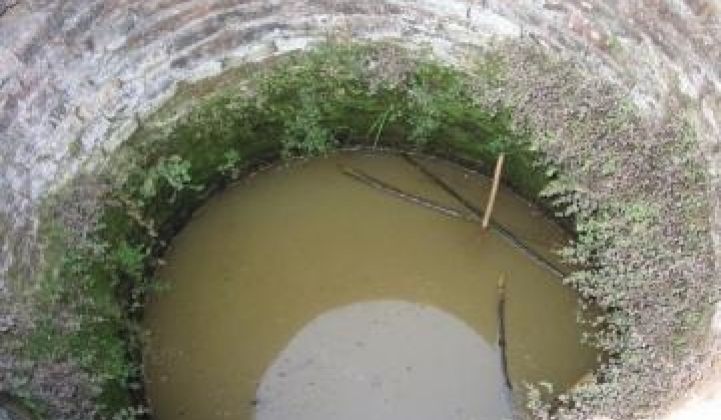Researchers in Delaware are worried by high levels of nitrates recently discovered in groundwater and drinking water. A recent study found 76% of domestic wells contained nitrates, while 18% of the wells exceed federal standards for drinking water.
Even some deep wells are affected, leading Delaware's Department of Natural Resources to conclude that surface contaminants are penetrating natural barriers, meaning "ground-water quality in a significant fraction of confined aquifer wells is susceptible to human activities."
Nitrates reach surface waters and groundwaters via septic systems, stormwater runoff and fertilizers used at farms, homes and businesses including golf courses. Nitrates threaten pregnant mothers, children and, in sufficient concentrations, nitrogen-rich waters precipitate eutrophication, contributing to dead-zones like in the Gulf of Mexico.
Nitrates that don't directly enter surface waters and groundwaters are typically removed from the wastestream at wastewater treatment plants, either via efficient processes like Ostara's Nutrient Removal Technology (which removes nitrogen in the from of NH3, aka ammonia) or via energy intensive processes utilizing aerobic bacteria.
But now a couple of rocket scientists and a waste expert from Stanford have devised a way to safely and efficiently dispose of nitrates while powering wastewater treatment plants without an external energy source.
Greenhouse Gases as Resources
As we've discussed previously, wastewater treatment processes utilizing aerobic bacteria require energy intensive aeration in order to operate (up to half of operating costs). Anaerobic bacteria require much less energy, but convert nitrates into nitrous oxide -- a greenhouse gas 300 times more potent than C02 -- and natural gas in the form of a methane biogas.
The scientists, Craig Criddle, Brian Cantwell, and Yaniv Scherson, have decided excess gases aren't such a bad thing. In fact, they want to utilize produced natural gas to power wastewater treatment plants off the grid, enabling plants to be placed in areas without a reliable energy supply. The plants could recycle fresh water for water-stressed regions.
What happens to the nitrous oxide in this process is equally remarkable.
The nitrous oxide is burned off in a small rocket engine. Says Cantwell, "When it decomposes, nitrous oxide breaks down into pure nitrogen and oxygen gas. At the same time, it releases enough energy to heat an engine to almost 3,000 degrees Fahrenheit, making it red hot, and it shoots out of the engine at almost 5,000 feet per second, producing enough thrust to propel a rocket."
To propel a rocket, or, put to better use, to generate electricity.
The scientists' plan harvests resources commonly occurring in wastewater. "For too long we've thought of treatment plants as places where we remove organic matter and waste nitrogen," Criddle said. "We need to view these wastes as resources, not simply something to dispose of."
Saving Money while Saving the World
In the developed world, the technology could produce wastewater treatment plants with low emissions (some natural gas will be emitted when combusted).
That's important because wastewater treatment plants accounted for 4.9 TgCO2 equivalents of nitrous oxide in the U.S. in 2008 (equivalent to 4.9 million metric tons of CO2).
When you utilize instead of emitting the methane produced by wastewater treatment, which reached 24.3 TgCO2 in 2008, and eliminate expenditures and emissions from energy used to power aerators, you begin to see the scale of potential energy, emissions and cost savings.
It's a remarkable advance: a self-sufficient, low-emission wastewater treatment plant that produces nitrate-free fresh water, thereby protecting water's end-users: aquatic and human life.
***
This article was originally published on the BlueTech Blog.



